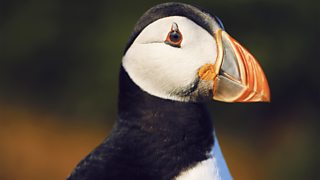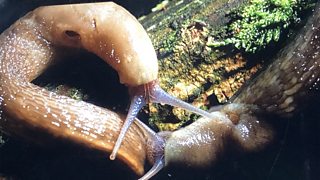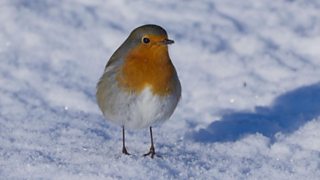Top tips for turning green (or even grey) spaces into nature havens
Do you manage a green space like a local sports ground, churchyard or a school playing field? Maybe you work at a library or a care home with an outdoor area? There’s lots you can do, even with a small garden, but if you’re new to planting or have a really small space check out Let it Grow from �������� Radio 2 to get you started.
How you manage your space has a big impact on the variety of plants, insects and animals that are there. Even if it's predominantly a car park!
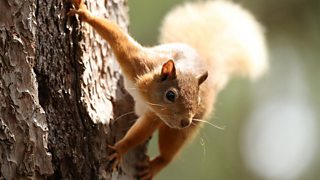
Imagine the difference if everyone made the patch of land they look after just a little more nature friendly – and even better, connected it to a patch of land next door, creating a nature network.
Here are our top tips for simple things that you can do to make a big difference, and make your part of our Wild Isles a nature haven. It might take a bit of trial and error to get everything right – and some actions will deliver faster returns than others – so don’t get disheartened if your results aren’t perfect first time around. Connecting with others, as well as nature, can be really helpful – see if there are any networks you can tap into for support and advice.
We’ve included links to resources and organisations to help you.

Our Top Tips
1) If you have grass, set aside areas of longer grass and temporary no-mow areas – eg around the edges of the area. Collect and compost all cuttings
This gives an opportunity for a wider variety of plants, like wildflowers to grow, attracting a range of insects, such as crickets, grasshoppers, moths and butterflies, and giving them a home. If you don’t have grass, could you convert any areas of gravel or paving? Or add some beds or pots?
Find out more - useful links
2) Plant and sow wildflowers to enhance areas of grassland you have created – or simply grow them in pots
It can take a while for native wildflowers to appear naturally – you can kickstart the process by sowing wildflower seeds or popping in some plants. This way you’ll get the quickest return on your investment of time and effort.
Find out more - useful links
3) Look after your trees, shrubs and hedges and create buffer strips around them – if you don’t have any, could you plant them?
If you have bigger plants such as trees, shrubs and hedges they can already be providing great homes for wildlife.
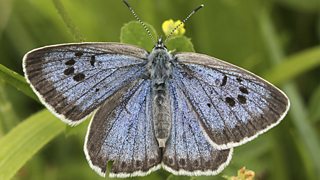
Where they are in or next to grass you can improve their benefit by creating temporary no-mow buffer strips around them, ideally including wildflowers. There, wildlife can safely shelter, forage, feed and breed. What’s more, buffer strips also help stop tree and shrub roots from drying, cool the atmosphere and slow and clean run-off from heavy rain.
In formal beds, you can create a similar effect by buffering your trees and shrubs with a mix of brightly coloured herbaceous plants that are attractive to bees and other pollinators.
If you don’t have any trees or shrubs could you plant any? And if you’re able to take on a bigger job, could you create a hedge? Are there any fences or brick walls you could plant climbers or shrubs against? It will take a while for these to really benefit wildlife, but they are a great long-term investment.
Find out more - useful links
4) Think homes – solitary bee homes; bird and bat boxes; water features
Provide the right environment and nature can come to you – whether you are a small grey space, or a larger green one. Maximise your chances by combining with an appropriate food source – such as pollen rich plants for bees in pots or beds.
Find out more - useful links
5) Connect – can you make corridors for wildlife by enabling connections within your land and with others?
You can maximise the impact of what you do by sharing what you’ve been up to with others, particularly those whose land is next to yours, and by creating opportunities for wildlife to move between spaces.
Find out more - useful links
6) Cut out the chemical herbicides and pesticides
It might be a wrench at first, but if you want a wide variety of wildlife, it’s a must. Save time and money and let nature balance it for you.
Find out more - useful links
7) Go Peat free with your compost when planting
Peatlands store carbon (good for helping slow climate change) and are wildlife hotspots – don’t destroy nature havens elsewhere to create yours!
Find out more - useful links

Sector specific groups and resources
Communities
- aiming to bring communities together to help nature where they live and work
– community gardening resources and networks
– advice and resources for supporting nature in your community
Churches and faith groups
– the conservation charity for burial grounds across the UK, spanning different religions, cultures and centuries. Lots of practical guides and resources.
– Christian charity with resources, a survey to complete and awards.
– Christian charity with events, resources and networks.
– Christian charity with events, resources and networks.
– a UK charity with a global focus, including a Green Mosques Project.
– spans the whole Jewish community, with some tips and a focus on conducting an environmental audit.
– interfaith network with resources and events.
Libraries
– a multiyear research and development programme to enable public libraries in England to address Environmental Responsibility.
For schools
The Regenerators – resources to inspire children and teenagers to live a greener life and encourage others to look after the planet from �������� Bitesize.
Let It Grow with Blue Peter - green quizzes, top environmental tips, and the green Blue Peter badge.

